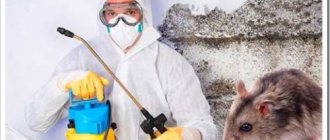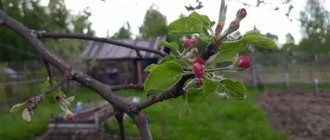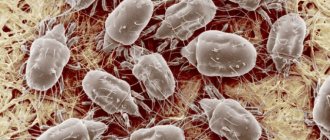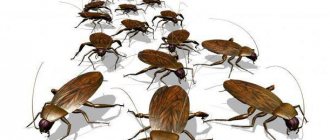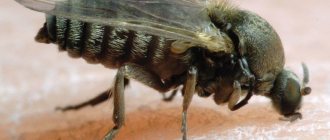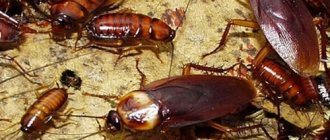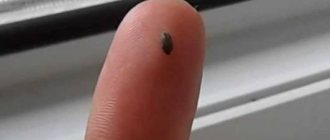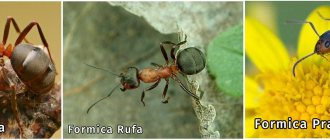Deratization measures are procedures aimed at exterminating or reducing the number of rodent pests in a room.
Such procedures are very important for ridding the home of parasites, since rodents are credited with not only carrying various viral and bacterial diseases, they are considered feeders that attract blood-sucking insects (fleas, mosquitoes, mosquitoes) and ticks, which also carry infections.
Rats, mice and other pests are credited with carrying diseases that are difficult to cure and dangerous to human health, such as plague, tularemia, tick-borne encephalitis, malaria, etc.
Note! This risk of infection makes us think that it is impossible to fight parasites on our own, since only specialized services can carry out effective baiting of rodents with special insecticidal preparations. Such processing requires special skills and the use of special equipment.
What is deratization?
The term deratization or disinsection can describe a set of procedures aimed at controlling rodents.
In other words, deratization is the treatment of a room from pests such as rats, mice, voles, which cause harm to humans because they spread various viruses and bacteria, and also damage property.
It is quite simple to distinguish deratization from disinsection, since the first is attributed to measures to destroy small pests (cockroaches, ants, etc.) and rodents, the second is the extermination of insects exclusively.
Types and methods
Deratization can be divided into two main types:
- Preventive type of measures - the purpose of which is to carry out procedures for cleaning the premises from the atmosphere, which pests consider comfortable and favorable for home improvement. This includes all methods of combating the elimination of rodents’ access to food and places where they can build burrows.
- Fighter type of events. All procedures performed in this case are aimed at killing insects, mice and rats in the room.
Let's celebrate! In addition to the type of deratization or disinfestation measures, rodents are baited in various ways.
There are four ways to carry out deratization:
- Mechanical. This method eliminates any impact on pests with poisons, since special traps and mousetraps are used for extermination. This method is suitable for residential apartments, since it will not be possible to catch a mouse in a mousetrap in an enterprise with an area of several hundred square meters.
- Chemical. Such deratization measures are carried out exclusively by professionals, since rodents will need to be poisoned with special raticide chemicals. Treating a room in this way can be harmful to health, so employees of sanitary and epidemiological companies carry it out in closed suits using special equipment. The owners, upon returning home a few days after completing all deritization procedures, are advised to ventilate the home well.
- Gas. Poisoning of rodents with gases is carried out exclusively in open spaces (ships, airplanes). To carry out the treatment, particularly poisonous gases are used, which remain in the room for a long time, even after ventilation, so this method is not suitable for treating apartments.
- Biological. This method is one of the simplest, since to repel pests they use an ordinary animal that catches and eats mice. In other words, they get rid of rats and cockroaches with the help of an ordinary cat, of which the pests are afraid and leave the home, since they no longer consider it comfortable for life. But this method is only suitable for small houses and apartments, or as a preventive measure against the appearance of rodents and insects.
What insects does it destroy?
Specialists who carry out deratization by exterminating pests using proven methods eliminate damage to plants, stocks, animal parasites and synanthropic insects.
Deratization and disinsection are destructive for insects such as flies, mosquitoes, cockroaches, ants, moths, bedbugs, silverfish and others. In other words, the services help free the premises from insect pests, which are difficult to get rid of.
What drugs are used?
Depending on the method of pest control, services may use various insecticidal agents. Chemical agents, if the same method of controlling rodents and insects was chosen, may also differ.
The most common drugs for the destruction of rodents by special services:
- Zookoumarin is a white or yellowish powder with a pungent odor. This drug is dissolved not in water but in acetone or alcohol. Experts spray it around the apartment and leave it to act for 7-15 days. After such treatment, pests die from a violation of the permeability of the walls of blood vessels, which causes fatal hemorrhages.
- Ratindane is a powder that does not have a characteristic odor, which is diluted in organic solvents. This remedy lasts for 5-8 days. It has the same effect on pests as zoocoumarin.
- Zinc phosphide is a dark gray powder with a garlicky odor. The drug has a short but effective duration of 2-3 days.
- Monofluorin is a pink crystalline substance soluble in alcohol or acetone. It has a detrimental effect on pests within one day.
What is disinfestation and in what cases is it needed?
Disinsection is a set of measures aimed at exterminating pests.
Disinsection is a set of measures aimed at exterminating pests. It is necessary in cases where the number of insects and weeds that pose a threat to agricultural crops, for example, reaches alarming levels. This happens for the following reasons:
- There is no normal control over the natural development of plants and insects;
- They are directly or indirectly imported into a new region;
- Human activities have caused the effectiveness of their natural enemies to be reduced or eliminated.
Without control over population growth, organisms can quickly reach levels that cause damage to human life and economy. Accordingly, such organisms become pests (for example, swarms of locusts leave behind bare landscapes).
But not all cases require large numbers of plants and insects for any harm to be felt from them. For example, the moth (Cydia pomonella) does not lay many eggs compared to many insects and often produces only one generation per year. But because it stains apples, making them commercially undesirable, this moth is classified as a pest.
Thus, pest control or disinfestation aims to reduce their numbers to an acceptable threshold. It is generally economically justified when the application of pest control measures reduces pest numbers to a level below which additional applications will not be profitable. That is, when the additional costs of fighting exceed the additional benefits. Elimination of pests (their complete removal) is usually not a feasible, practical or viable task.
What is pest control?
Disinsection is the persecution of insect pests by using special chemicals. This concept combines the fight against all insects that can somehow cause discomfort to a person, this includes: cockroaches, fruit flies, bedbugs and others.
Types and methods
According to the principle of deratization, disinfestation also differs in the types of treatment: complete and preventive. In the first case, all insects will be exterminated by baiting with special chemicals; in the second, their comfortable conditions are destroyed, which forces the insects to leave the home.
Just like deratization, disinfestation is carried out in various ways:
- chemical;
- mechanical;
- biological;
- physical.
Disinsection methods
- Physical. It involves the use of mechanical means (traps, sticky paper, nets on openings) and high temperature (disinsection agents are boiling water, hot steam, heated dry or moist air). Physical influence is always an auxiliary method.
- Chemical. Various toxic substances are used for it, which are added to food bait, applied to surfaces or sprayed around the room. This is the main method.
- Biological. Includes the use of natural enemies, developmental inhibitors and hormones. It is an auxiliary method.
Disinfestation stages
A set of disinfestation measures is carried out in stages:
- Initially, specialists examine the required object and find sources of pests, their places of accumulation and approximate numbers.
- Next, service workers develop tactics to combat the problem and determine the frequency of treatment with the selection of the most effective drugs.
- The schedule for disinfestation procedures is discussed with the owners of the premises.
- Specialists carry out the work necessary to prevent the reappearance of the pest.
- The last step is to process the premises at a set time.
What insects does it destroy?
Insects that are controlled during disinsection activities include:
- cockroaches;
- flies;
- ants;
- bedbugs;
- mosquitoes, etc.
What drugs are used?
Chemical disinfection preparations are divided into groups:
- Chlorine-containing products. Such preparations contain chloramine, hypochlorite, ditertiosine salt of calcium chloride or chlorcin. Such products are considered disinfectants.
- Detergents with active surfactants that enhance the effect of other drugs.
- Oxidizing agents (like hydroperite, hydrogen peroxide, potassium permanganate). Also used to disinfect premises.
- Alcohol-containing products.
- Phenols.
- Aldehydes.
Features of room treatment
Since insects and rodents often settle in places where it is comfortable for them not only to live, but also to eat, treatment for the purpose of exterminating them requires additional measures to ensure high-quality disposal of pests.
In addition to treating the premises itself, deratization agents are placed on special sites, in special containers (containers) in waste chambers, basements, and in places inhabited by parasites. Traps are added over time if pests actively encounter them.
Openings where insects and rodents enter can be sprinkled or coated with rodenticide coatings and cemented.
Mandatory events according to the schedule
According to the agreement drawn up with the service carrying out deratization and disinfestation activities, the schedule must contain some mandatory items:
- Company representatives must conduct a study of the site and determine methods to combat them.
- At the specified time, one or more treatments of the room with chemicals must be carried out.
- Additionally, suspected pest entry points must be treated and eliminated.
- Preventive measures are considered mandatory to be carried out according to schedule to eliminate the possibility of pests returning again.
- Upon completion of work within the specified period, the service must check the number of parasites and carry out additional treatment.
Unscheduled call by residents
An unscheduled call by residents is provided for cases when pests sneak into apartments from the basement or attic. In such cases, their population increases, and additional treatment of the apartment occupied by parasites is required.
Recommendations for disinfestation
How to prepare an object for extermination work
Preparation is necessary so that, firstly, the event is as effective as possible, secondly, during its implementation people are not harmed (both enterprise employees and exterminators), and thirdly, there is no contact of edible ingredients with insecticides. Therefore, the facility administration must:
- appoint a person responsible for disinfestation from among the employees; he will control the entire process - from preparation to putting the premises in order after treatment;
- inspect the condition of floors, stairs, ventilation and lighting systems;
Good illumination of the site helps to avoid injury to exterminators
- carry out the necessary safety measures so that specialists are not harmed by electric current, gas, steam, etc.;
- create conditions for processing all premises, as well as facilitate access to corners, walls, communication outlets, and to do this, clear passages at least 70 cm wide along the walls and between stacks of food products;
- ensure that wet cleaning is carried out the day before;
- organize the removal of pastry trays and bread forms, as well as food products; If this is not possible, then order the edible products to be tightly closed so that toxic substances do not get into them.
How to decide on a processing method
If an insect infestation is detected at a facility, then a chemical method is chosen. It is prohibited to use hazard class I products in food production. Substances belonging to classes II and III are allowed to be used only by trained personnel (with the exception of class III products in aerosol packaging, they are sprayed without the help of professionals). Enterprise employees can use substances of hazard class IV independently.
To process sanitary suits, gowns, and hats, a high temperature method is used: the clothes are boiled or fried in autoclaves.
Mechanical devices are used for preventive measures; they help to avoid the invasion of pests and their reproduction in complex technological equipment, such as waffle production lines. This is especially true in the warm season, when flies and ants become more active.
How to choose an organization that carries out pest control activities
Enterprise employees can carry out prevention of insect infestation on their own, but to exterminate “uninvited guests,” professionals are needed, because, as mentioned above, only they have the right to use potent substances. The pest control organization must have a license to operate and certificates for each product used.
Exterminators work in special suits
When choosing which of these organizations to enter into a service agreement with, you should rely on the following criteria:
- is there a guarantee of results;
- does the company work on a schedule convenient for the customer;
- is there a system of cumulative discounts;
- How detailed information about the preparation and conduct of events is provided by the company's managers.
What to do after extermination work
To avoid the insecticide getting into food raw materials, after finishing the treatment it is necessary to carry out wet cleaning of the premises according to certain rules:
- Cleaning of workshops and equipment begins no later than three hours before using them, but not earlier than 8–12 hours after disinfestation. The exception is the use of volatile agents; they are removed from surfaces after 3–4 hours.
- Cleaning is done with the windows (vents) open or with ventilation running.
- To clean the surface, use a damp rag and a vacuum cleaner, removing substances primarily from the floor and equipment - dough mixers, mixers, dough sheeters, proofers, bread slicers, etc. In places from which the insecticide will not get on food ingredients (behind pipes, door frames, skirting boards, etc.), the drug is left until its expiration date.
- The final stage is washing the surfaces with a soap and soda solution.
 Moreover, SanPiN 3.5.2.1376-03 (Appendix 4, paragraph) does not recommend replacing it with washing powder.
Moreover, SanPiN 3.5.2.1376-03 (Appendix 4, paragraph) does not recommend replacing it with washing powder.
Follow the rules for carrying out insect control measures - this has a positive effect on the quality of products and also prevents sanctions from Rospotrebnadzor.
Subscribe to the GolfStream channel in Yandex.Zen
!
Pros and cons of events
Like any procedure using various insecticidal agents, pest control has its pros and cons.
The positive aspects of deratization include:
- rate of extermination of parasites;
- carrying out bullying using proven drugs and modern technologies;
- the concentration of the poison is selected taking into account the characteristics of the room;
- there is no need to expose yourself to the risk of poisoning from toxic chemicals;
- rodents and insects quickly and irrevocably leave the home.
The disadvantages of treating a room by specialists include:
- high cost of services;
- waiting for sanitation workers assigned to service the required area takes a long time, which gives pests time to multiply and occupy more territory;
- The service must have all the permits to carry out deratization and disinfestation, and sometimes finding one on your own is quite difficult.
Deratization and disinfestation are the fastest and most effective ways to control rodents. It would be especially appropriate to call a special service if the pest population has reached a serious number, and it makes no sense to fight them on your own.
Let's celebrate! But, in apartments and private houses, such occurrences are considered rare, so if suddenly only a couple of mice, ants or cockroaches appear in your home, it is better to fight them yourself, using mechanical deratization traps or using a biological method or getting a cute fluffy cat.
 Moreover, SanPiN 3.5.2.1376-03 (Appendix 4, paragraph) does not recommend replacing it with washing powder.
Moreover, SanPiN 3.5.2.1376-03 (Appendix 4, paragraph) does not recommend replacing it with washing powder. 


